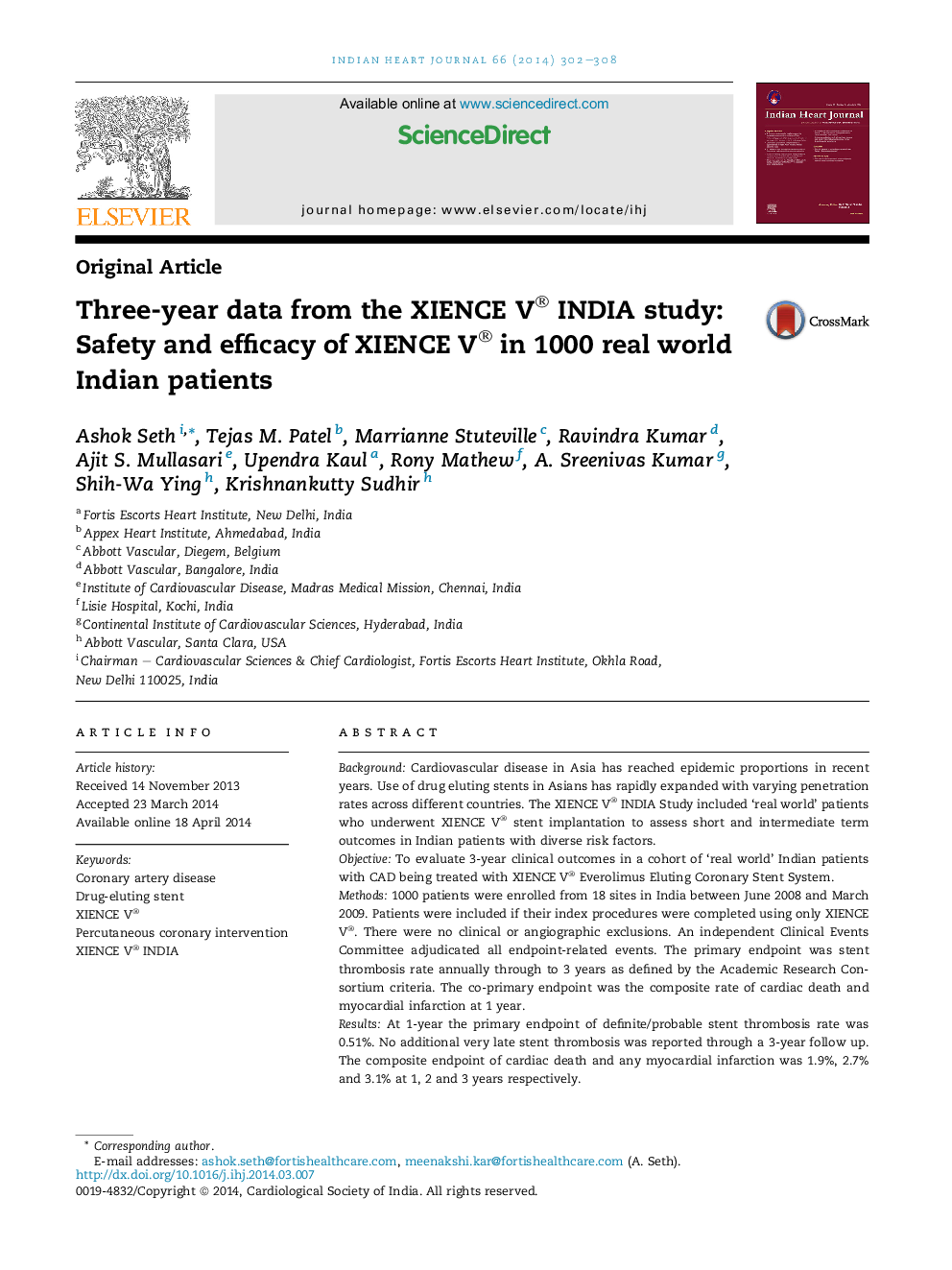| Article ID | Journal | Published Year | Pages | File Type |
|---|---|---|---|---|
| 2927879 | Indian Heart Journal | 2014 | 7 Pages |
BackgroundCardiovascular disease in Asia has reached epidemic proportions in recent years. Use of drug eluting stents in Asians has rapidly expanded with varying penetration rates across different countries. The XIENCE V® INDIA Study included ‘real world’ patients who underwent XIENCE V® stent implantation to assess short and intermediate term outcomes in Indian patients with diverse risk factors.ObjectiveTo evaluate 3-year clinical outcomes in a cohort of ‘real world’ Indian patients with CAD being treated with XIENCE V® Everolimus Eluting Coronary Stent System.Methods1000 patients were enrolled from 18 sites in India between June 2008 and March 2009. Patients were included if their index procedures were completed using only XIENCE V®. There were no clinical or angiographic exclusions. An independent Clinical Events Committee adjudicated all endpoint-related events. The primary endpoint was stent thrombosis rate annually through to 3 years as defined by the Academic Research Consortium criteria. The co-primary endpoint was the composite rate of cardiac death and myocardial infarction at 1 year.ResultsAt 1-year the primary endpoint of definite/probable stent thrombosis rate was 0.51%. No additional very late stent thrombosis was reported through a 3-year follow up. The composite endpoint of cardiac death and any myocardial infarction was 1.9%, 2.7% and 3.1% at 1, 2 and 3 years respectively.ConclusionDespite the high risk population of coronary artery disease, the use of XIENCE V® in 'real world' Indian patients was associated with very low clinical event rates upto three years of follow up.
